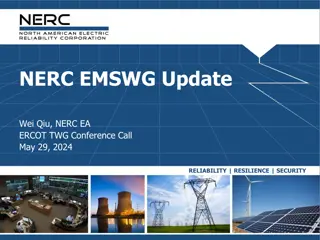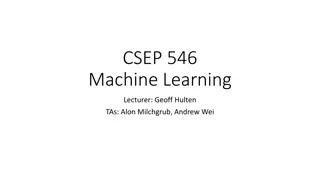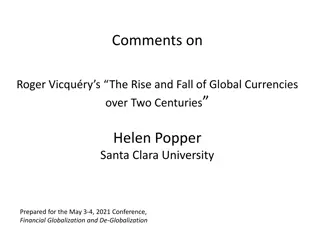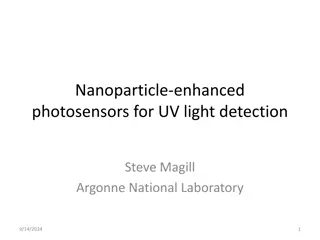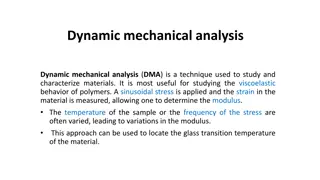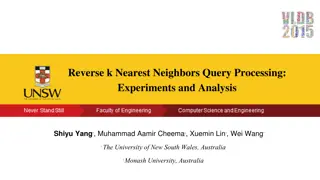
Exploring Non-Hermitian Systems Through Electrostatics and Real Spectra in IPS 2022
Discover the fascinating realm of non-Hermitian systems in IPS 2022, where innovative applications like lasing and sensing are being pursued. Dive into the design of stable non-Hermitian Hamiltonians using a novel electrostatics analogy. Explore the implications of real spectra and boundary conditions on energy sensitivity and system stability.
Download Presentation

Please find below an Image/Link to download the presentation.
The content on the website is provided AS IS for your information and personal use only. It may not be sold, licensed, or shared on other websites without obtaining consent from the author. If you encounter any issues during the download, it is possible that the publisher has removed the file from their server.
You are allowed to download the files provided on this website for personal or commercial use, subject to the condition that they are used lawfully. All files are the property of their respective owners.
The content on the website is provided AS IS for your information and personal use only. It may not be sold, licensed, or shared on other websites without obtaining consent from the author.
E N D
Presentation Transcript
1 IPS 2022 Designing Non-Hermitian Real Spectra Through Electrostatics Russell Yang, Jun Wei Tan, Ching Hua Lee and friends Me! Non-hermiticity presents a vast newly opened territory that harbors new applications such as lasing and sensing. However, non-Hermitian systems need not be stable, and much effort has been put into designing systems that are. In this work, we numerical study of a novel electrostatics analogy to design non-Hermitian Hamiltonians. Conventional Approach Our Electrostatics Approach physics and Hamiltonian Hamiltonian Spatial State Profile present a Spectrum Spectrum
2 IPS 2022 What is non-Hermiticity? It is the first lecture in any undergraduate course that the Hamiltonian must be Hermitian or must it? = ? ? ?/ ? ???/ ? ? ? 0 = ? ? ? 0 ? Real energies generate unitary time evolution However, non-Hermitian Hamiltonians can have real spectra too ! [1] Ali Mostafazadeh , "Pseudo-Hermiticity versus PT symmetry: The necessary condition for the reality of the spectrum of a non-Hermitian Hamiltonian", J. Math. Phys. 43, 205-214 (2002) https://doi.org/10.1063/1.1418246
3 IPS 2022 Non-Hermitian Skin Effect System Boundary ? + ? ? ? ? ? ? 0 This is known as the Non-Hermitian Skin Effect (NHSE) or Non-Hermitian Pumping. Celebrated Bulk-Boundary Correspondence is broken. Eigenstates decay exponentially from the system edge. Strong dependence of the energy spectra on boundary conditions. !
4 IPS 2022 Skin Effect Sensors Since the skin effect corresponds to sensitivity to boundary conditions, the measurable can be coupled to the boundary conditions Measurable Open Boundary Conditions = 0 Periodic Boundary Conditions 0 Exponential Sensitivity ? =??0 ? = ?exp ?? [2] Budich, J., & Bergholtz, E. (2020). Non-Hermitian Topological Sensors. Phys. Rev. Lett., 125, 180403.
5 IPS 2022 The story so far Non-Hermitian systems exhibit exciting and unique phenomena 1 However, they require real eigenenergies to be stable 2 How can we design systems with such desired properties? ?
6 IPS 2022 The Problem Open Boundary Condition Eigenenergies Periodic Boundary Condition Eigenenergies Im(?) Re(?) Given the energy spectra (in the thermodynamic limit) under both periodic and open boundary conditions, can we find a Hamiltonian? ?
7 IPS 2022 Electrostatic Analogy Non-Hermitian Systems Electrostatics Complex wavenumber ? Complex potential ? Electric potential ? Spectral deformation ? Surface charge ? Density of states Grounded conductor PBC spectrum Path of nonzero surface charge OBC spectrum
8 IPS 2022 Preview 1 Non-Hermitian systems exhibit exciting and unique phenomena However, they require real eigenenergies to be stable 2 How can we design systems with such desired properties? ? 3 Designed Hamiltonians should be local Band gap? Density of states? Lack of symmetry? Exceptional points? 4


